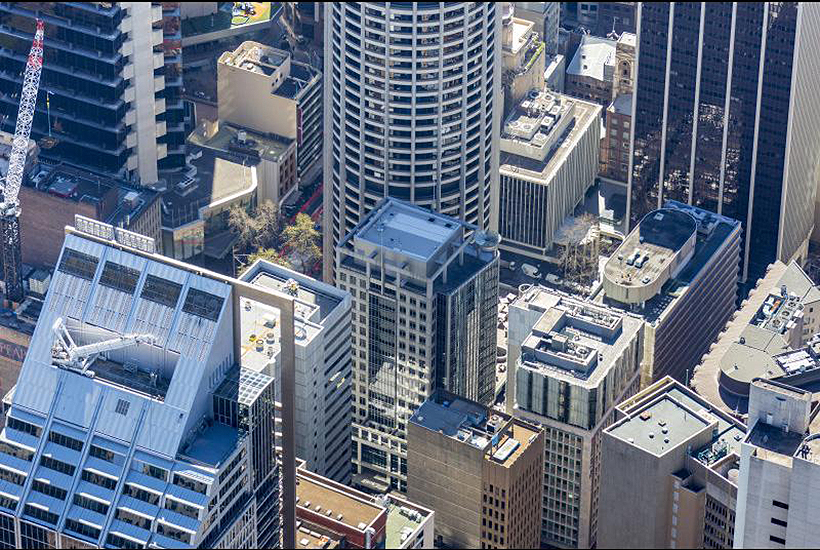Commercial property predictions for 2018

Commercial property behaved mostly as expected in 2017.
Yields continued to firm, tenants were back in the market and the office sector did particularly well, benefiting from business growth and, in the case of Sydney, withdrawal of stock.
Meanwhile, Amazon finally made its relatively lacklustre entry into the Australian market.
Commercial Insights: Subscribe to receive the latest news and updates
One of the biggest changes we saw was the dramatic pullback of Chinese investors. After several years of big jumps in investment volumes, property is now on the Chinese Government’s restricted list. While some Chinese are still buying, it has suddenly become a lot harder for them to invest.
The other big surprise was Frank Lowy selling Westfield, which is perhaps the strongest sign that the way we are shopping is fundamentally changing and the impacts on shopping centres will continue.
Looking ahead to the new year, REA Group chief economist Nerida Conisbee outlines the trends she expects to see in the commercial property market in 2018.
Industrial still the top pick
Industrial is the property sector benefiting most from technological change, and the list of occupiers that will need it will continue to grow. Online retailing has most immediate need, with the types of industrial properties required ranging from small warehouses for last-mile deliveries, to full scale distribution centres. Food manufacturing is now seeing a boost from Chinese demand and urban farming is a growing sector that requires warehousing. Once driverless cars start operating, they will need somewhere to refuel, be repaired and be stored, and warehousing will be the likely solution to this as well.
Demand for shopping centres on the way down
Retail has always been the safest commercial property type. Australia has strict planning controls for shopping centres, a population that is steadily growing and an influx of international retailers in recent years that has improved tenant choice for owners. The entry of Amazon into Australia may be a game changer, although its early weeks have so far been disappointing, with the consumer experience relatively poor. There is, however, no doubt that all of us will be shopping more online in the future and this will fundamentally change how often we need to travel to a shopping centre.

The entry of Amazon into Australia will be a game changer.
The biggest news for shopping centres came at the end of the year when Frank Lowy announced he was selling Westfield for $US25 billion to Unibail-Rodamco. When the one of the biggest shopping centre owners in the world decides to get out, it perhaps sends a message that the way we shop is fundamentally changing and shopping centres may well be impacted.
All is not lost for retail, however. It’s unrealistic to assume that no one will ever go to a retail store again and there will be some retailers and some centres that will continue to thrive. And don’t forget that Amazon is now going into bricks and mortar with its purchase of Whole Foods Market in the US. Some things may come full circle.
Development site values to steadily decline
The residential development boom is coming to an end and the number of dwelling approvals is now trending down. It is partly being driven by fewer property investors – it is getting more expensive and more difficult for investors to get finance and offshore buyers have been hit with higher taxes in many states. With fewer investors, this means greater difficulty in getting enough pre-commitments to start projects. Some cashed-up developers may hold, however for others it might be necessary to sell.

Development sites could find themselves in less demand in 2018.
The other driver of a downward trend in development will be fewer Chinese developers in Australia. Property has now been put on the restricted list by the Chinese Government, which will make investing more difficult. Given the number of Chinese developers in Australia, as well as the amount of funding that Chinese investors have provided to get projects up and running, it is likely to be a key factor influencing demand.
Office vacancy rates to continue to drop
Finding office space in Sydney and Melbourne right now is already problematic, however Brisbane and Perth are also expected to see tightening conditions for tenants. Perth’s office market has been the most challenged in recent years, but mid-last year we started to see early signs of a recovery. Rising iron ore prices, greater demand for lithium and greater automation of mines from centralised locations are all expected to continue to drive demand. Already we can see rising demand from renters in Perth on realestate.com.au, which points to jobs growth.

Melbourne’s office market has continued to tighten.
Australia continues to be a safe haven
Who would invest in London offices at the moment? I know plenty of people are, with the weak pound making it cheaper, however the impacts of Brexit are such an unknown, particularly for the future of financial services. The US economy is booming but the erratic behaviour of Donald Trump continues to be a concern. Investing in a country where there are continual calls for the impeachment of a President seems somewhat reckless.
Meanwhile, Australia quietly moves towards its 27th year of positive economic growth. With high levels of transparency, a comparatively stable government, strict planning controls and strong performance of most commercial property types, why wouldn’t you want to buy here?
Nerida Conisbee is the chief economist for REA Group.







